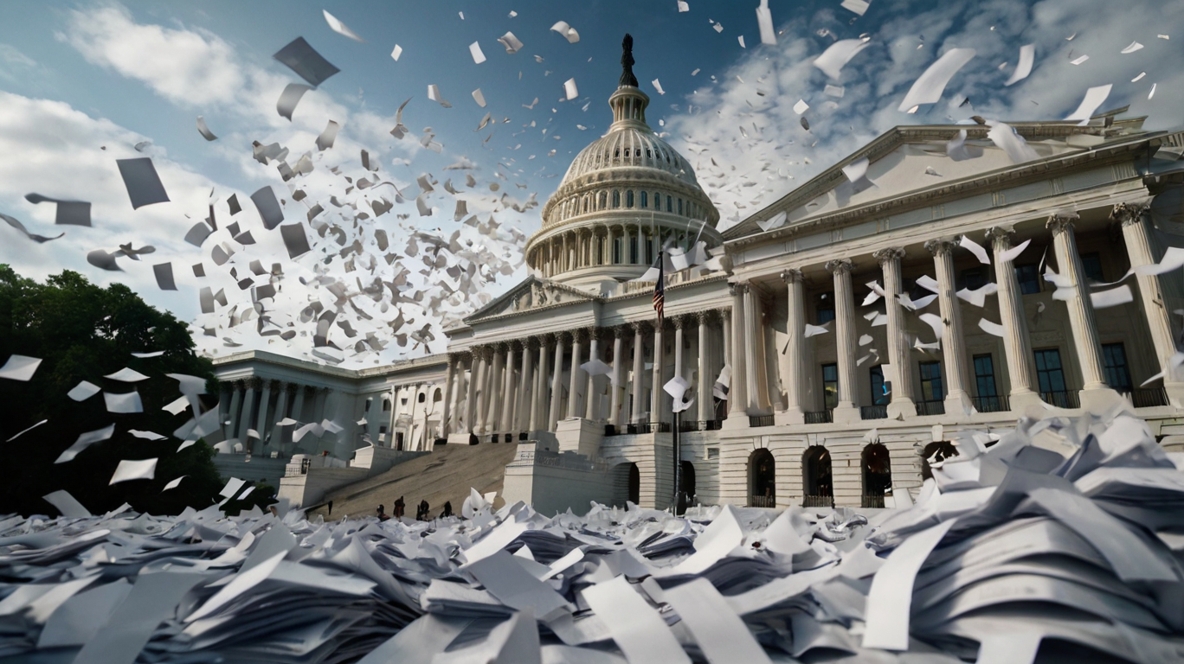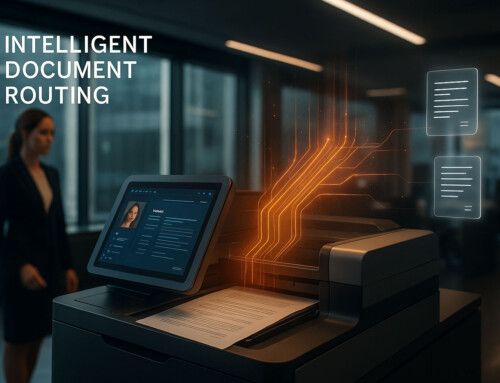Washington is ditching paper. No longer bogged down by miles of red tape and filing cabinets, U.S. government agencies are now sprinting toward digitization, and it’s not just a trend—it’s the law. When the Modernizing Government Technology Act and Foundations for Evidence-Based Policymaking Act were passed, they set the stage for sweeping changes in how federal agencies manage their records. By 2022, the National Archives and Records Administration (NARA) declared paper dead in the water, demanding that all federal agencies transition to digital recordkeeping. But here’s the rub: for an institution built on paper, switching to digital overnight isn’t just a headache—it’s a revolution. And this is where automated document scanning solutions, like those provided by ccScan, step into the spotlight.
Drowning in Paper: The Government’s Legacy Burden
Let’s be clear: the government’s problem isn’t small. Federal, state, and local offices are swamped in billions of paper records. Everything from tax filings to healthcare claims to public records requests is tethered to paper-based workflows that date back decades. Imagine trying to fulfill a public records request under the Freedom of Information Act (FOIA) when crucial documents are buried in dusty archives. It’s not only a logistical nightmare but also a public relations issue when transparency delays fuel mistrust.
Beyond FOIA, compliance with legal and regulatory frameworks becomes a balancing act when the systems in place are outdated. Every day spent on paper-based processes means higher chances of inefficiencies, errors, and the risk of security breaches. It’s no wonder that digitization has become an urgent priority for many agencies.
Legislation Leading the Digital Charge
The federal government is done with paper-heavy workflows, and recent legislation proves it:
-
Modernizing Government Technology Act (2017): Pushing agencies to overhaul archaic systems, this law set aside dedicated funding to modernize IT infrastructure. In the context of document management, this funding opens the door to the wide adoption of cloud-based scanning and digitization solutions.
-
Foundations for Evidence-Based Policymaking Act (2018): This law isn’t just about transparency; it’s about making government data accessible. As part of this push, agencies are required to move away from paper and digitize records so that data can be analyzed and shared in real-time.
-
NARA’s 2022 Electronic Records Mandate: This is the kicker. NARA gave all federal agencies until the end of 2022 to stop creating new paper records. If it’s not digital, it’s not compliant. The sweeping nature of this mandate has forced agencies across the country to look at automated scanning as more than just an efficiency booster—it’s a legal necessity.
These laws and mandates aren’t just paper tigers. They have teeth—and consequences for non-compliance. For public agencies already stretched thin, the transition to digitization must be seamless, efficient, and compliant. This is where automated document scanning solutions are no longer a luxury but a legal and operational requirement.
What’s the Real Cost of Staying Paper-Heavy?
It’s simple: inefficiency equals money lost. Every hour a government employee spends rifling through filing cabinets is an hour wasted. According to industry estimates, U.S. federal agencies could save $37 billion annually by digitizing records and automating workflows. The immediate savings in storage alone—both physical space and digital storage—is staggering.
And the cost goes beyond dollars. Public trust is eroded when citizens experience delays in accessing services or public information. Consider an office that has to process hundreds of tax filings daily. If their paper-based system means weeks of delay, public dissatisfaction grows, and the burden on civil servants only compounds.
The quicker a government agency can scan, digitize, and integrate its records into modern CRMs like Salesforce, the faster it can process requests and allocate resources to pressing issues. Automated document scanning directly into systems like Salesforce, offered by solutions such as ccScan, creates an immediate impact on workflow, reducing document handling time and improving data accuracy.
Automation: The Only Answer to the Government’s Paper Problem
There’s no other way to say it: manual document scanning won’t cut it anymore. Agencies need automation to handle the sheer volume of paper records they’re sitting on. Automated document scanning tools can process vast numbers of files with speed and precision that’s simply impossible to replicate manually.
But it’s not just speed that makes automated scanning appealing. Today’s best-in-class solutions, like ccScan, come equipped with Optical Character Recognition (OCR) technology, which can read and digitize printed text accurately. That means no more lost data or human error from manual data entry. Combine that with direct integration into cloud-based CRMs like Salesforce, and you’ve got a solution that delivers not just compliance but seamless operation.
The New Normal: ccScan’s Experience with Government Clients
Government clients aren’t new to ccScan. From municipal offices buried in permits to federal agencies grappling with healthcare records, ccScan has worked with a variety of government entities to digitize their workflows. The company’s ability to tailor solutions for different government needs sets it apart from generic scanning software.
For agencies managing high volumes of sensitive data, like public health departments or state tax offices, ccScan’s ability to scan directly into Salesforce makes it a go-to solution. The integration allows users to manage digitized documents with ease, ensuring that data is available when and where it’s needed most.
ccScan’s government clients have repeatedly rated its services five stars, lauding the ease of use, compliance support, and seamless integration with existing systems. These testimonials are a testament to the solution’s capability to handle complex government workflows with efficiency and accuracy.
- Find out more here: ccScan Document Capture Solutions
Security: The Silent Driver Behind Document Automation
Digitization also makes documents safer. Paper records, no matter how well protected, are vulnerable to loss, theft, or damage. Think of hurricanes, fires, or even simple human error. But with encrypted, cloud-based storage solutions, digitized records can be stored and accessed securely, reducing the risks associated with physical storage.
In fact, new security guidelines issued by the Cybersecurity and Infrastructure Security Agency (CISA) encourage government agencies to prioritize digital solutions that offer secure, encrypted cloud storage. For government entities handling sensitive information, automated scanning and cloud storage go hand-in-hand to ensure that records stay secure and easily accessible.
Conclusion: The Future is Paperless
Legislative mandates, public demand for transparency, and internal efficiency drives mean one thing: government offices must go digital, or they’ll face an overwhelming burden of inefficiency, public dissatisfaction, and non-compliance.
Automated document scanning, especially when integrated with cloud platforms like Salesforce, offers a solution that checks all the boxes—speed, accuracy, security, and compliance. ccScan’s proven experience and highly-rated services make it a leading partner for government agencies looking to modernize. The paperless future isn’t coming; it’s already here.
Sources:
-
National Archives – NARA’s Electronic Recordkeeping Deadline for 2022:
https://www.archives.gov/records-mgmt/policy/electronic-messages -
Modernizing Government Technology Act on Congress.gov:
https://www.congress.gov/bill/115th-congress/house-bill/2227 -
Foundations for Evidence-Based Policymaking Act on Congress.gov:
https://www.congress.gov/bill/115th-congress/house-bill/4174 -
Cybersecurity and Infrastructure Security Agency (CISA) – Best Practices for Cloud Storage Security:
https://www.cisa.gov/cloud-security






